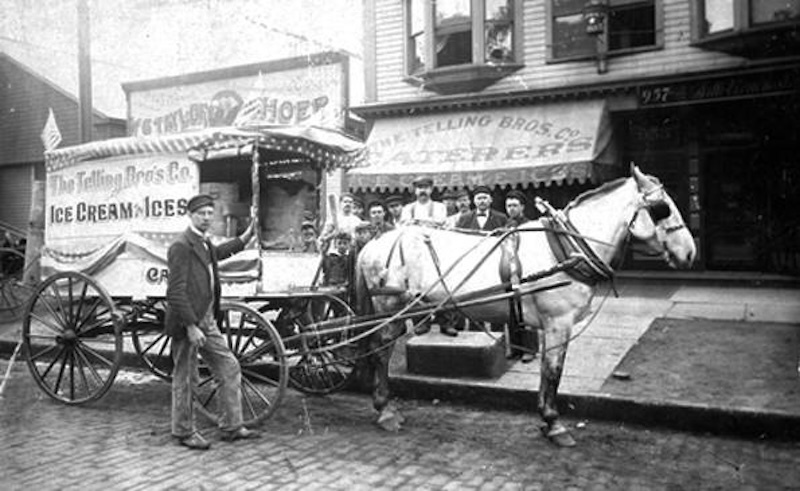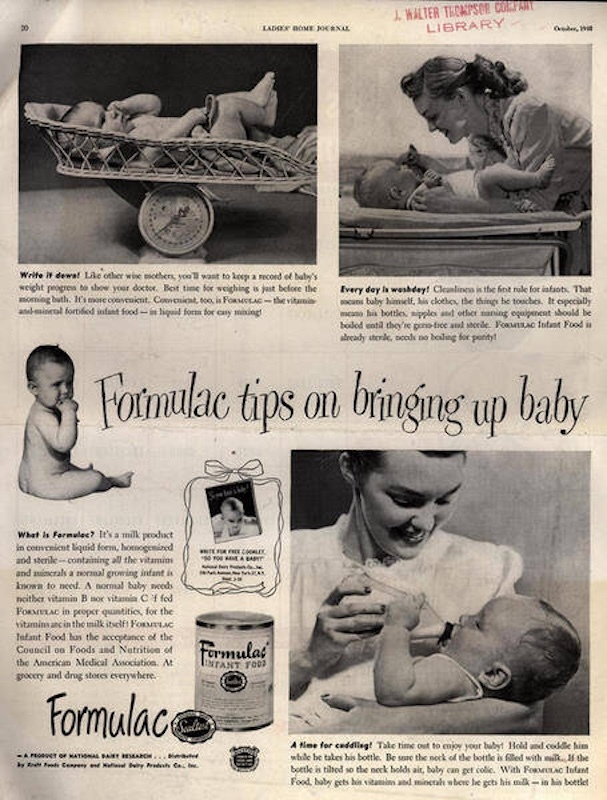
Reflecting on his career as a dairyman, William E. Telling summed up his experience with the words, "just work and work and work some more; do the work of two and draw the pay of one.” This reflects his rise from selling farm produce and milk door-to-door on the way to becoming the head of Cleveland’s largest dairy enterprise.
William E. Telling was born on October 30, 1869, to William and Mary Telling on their farm in South Euclid, Ohio. He was one of ten children in the family. His industrious nature and enthusiasm first emerged during his childhood as he began selling strawberries from the family farm door to door in Cleveland. He soon added milk from his father’s dairy cows for his customers. By age 17, Telling secured a job at nearby Bluestone quarries as a derrick operator. He continued to save money; by age 19 he moved on to conducting horse-drawn trolleys on Euclid Avenue. There, Telling described his experience as “a course in business college” as he conversed daily with businessmen on their way downtown. Within four years he saved money to buy rights to a milk delivery route in Cleveland and began his journey in the dairy business. He organized his customers to leave milk orders and improved his delivery efficiency.
By December 1895 he enlisted his brothers to incorporate the Telling Brothers Company, which sold milk and ice cream from a store/shop on Willson Avenue (later East 55th Street) in Cleveland. Meanwhile, the Belle Vernon Farms Dairy Co. formed next door to Telling Bros. at 957 Willson Avenue in 1897. Soon after, the Telling Brothers joined their neighbor and expanded into larger quarters on Cedar Avenue. During this time, Telling was first to pasteurize, develop, and distribute (via home delivery) glass bottled milk, which revolutionized the industry with standards of cleanliness and purity. From farm to factory to home, the milk was chilled and processed using the highest standards of quality and cleanliness. By 1916, Telling bought his partners’ interests and incorporated the Telling-Belle Vernon Dairy Company. In 1928 the firm became a division of the National Dairy Products Company using the Sealtest brand name to indicate testing specifications of the highest quality. Throughout this corporate journey, William Telling retained his status of president of the company and was a very successful businessman, amassing a $17 million fortune from investments in dairy operations, acquisitions, and mergers throughout Ohio, West Virginia, and western Pennsylvania. He also developed the SMA Corporation (makers of the first prepared milk for infant food), was a Director of the Standard Oil Trust Company, a real estate investor, owner of a semi-professional baseball team, and founder of the Lyndhurst Lumber Company. Telling held memberships in the Mid Day Club, the Cleveland Athletic Club, Acacia Country Club, Westwood Trapshooting Club, and the Ohio Horticultural Club.
In 1928, Telling began work on his new home on the family farm at 4645 Mayfield Road in South Euclid. The 26-room, 20,000-square-foot mansion was designed by John Sherwood Kelly in the style of English Tudor and French Normandy. It was completed in 1929 for a cost of $700,000. The interior includes an abundance of marble, hand-carved wood door panels, and hand-hewn beams and rafters. Telling enjoyed the greenhouse, aviary for exotic birds, a mushroom cellar, and a conservatory for tropical plants. The house was the first air-cooled residence in the area. The Depression followed soon. Telling lost much of his fortune in the stock market crash in 1929 but he managed to live comfortably, albeit conservatively, until his death in 1938.
The property was liquidated following Telling’s death and sold for $49,000 in a sheriff’s sale in 1945. The buyer then sold the property to the Cuyahoga County Public Library system for $82,000 in 1952. The home served as the South Euclid library branch from 1954 to 2013 and was placed on the National Register of Historic Places in 1974. After the county library system announced plans to build a new South Euclid facility in 2012, the local community and county supported the sale of the mansion to Richard Barone, a local investor with an interest in American porcelain art. Barone completed the purchase of the Telling Mansion, undertook a historically sensitive renovation, and reopened the former library as the Museum of American Porcelain Art in 2019.
Images


















